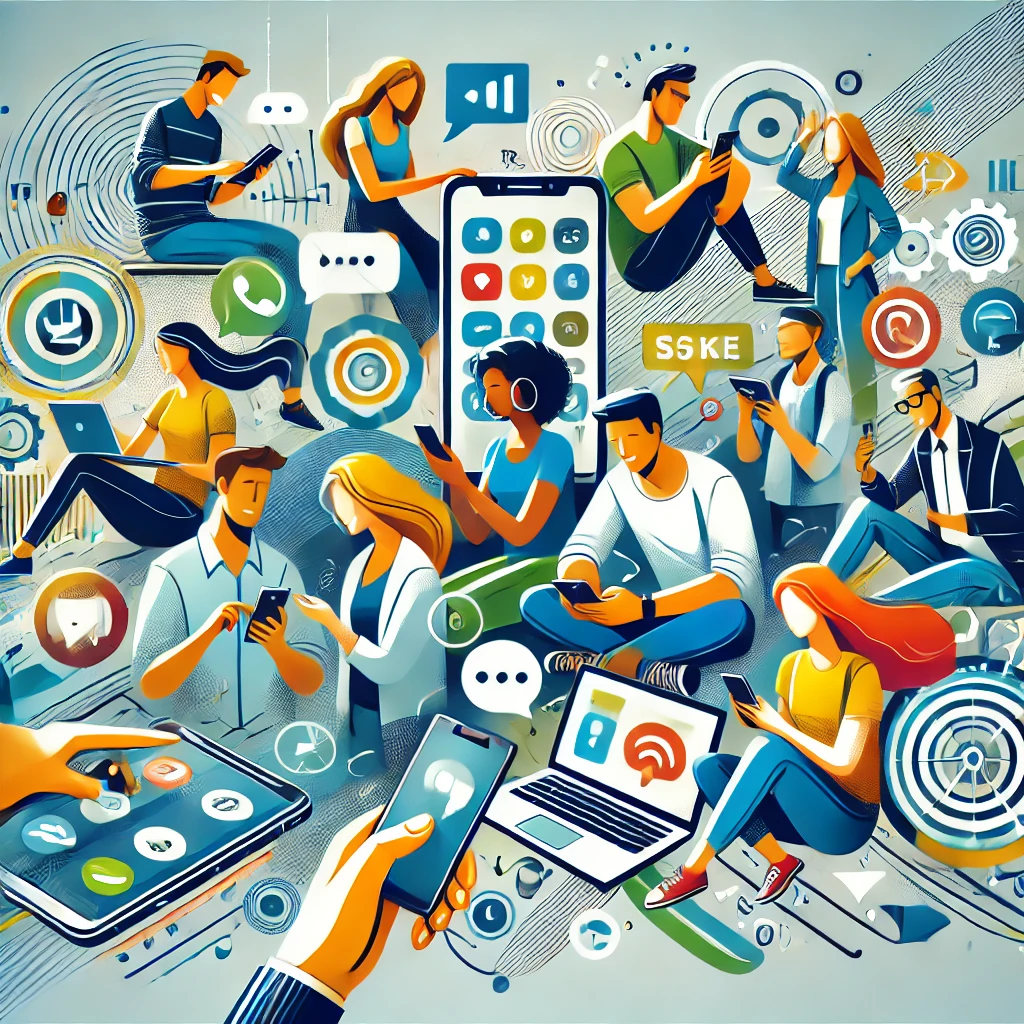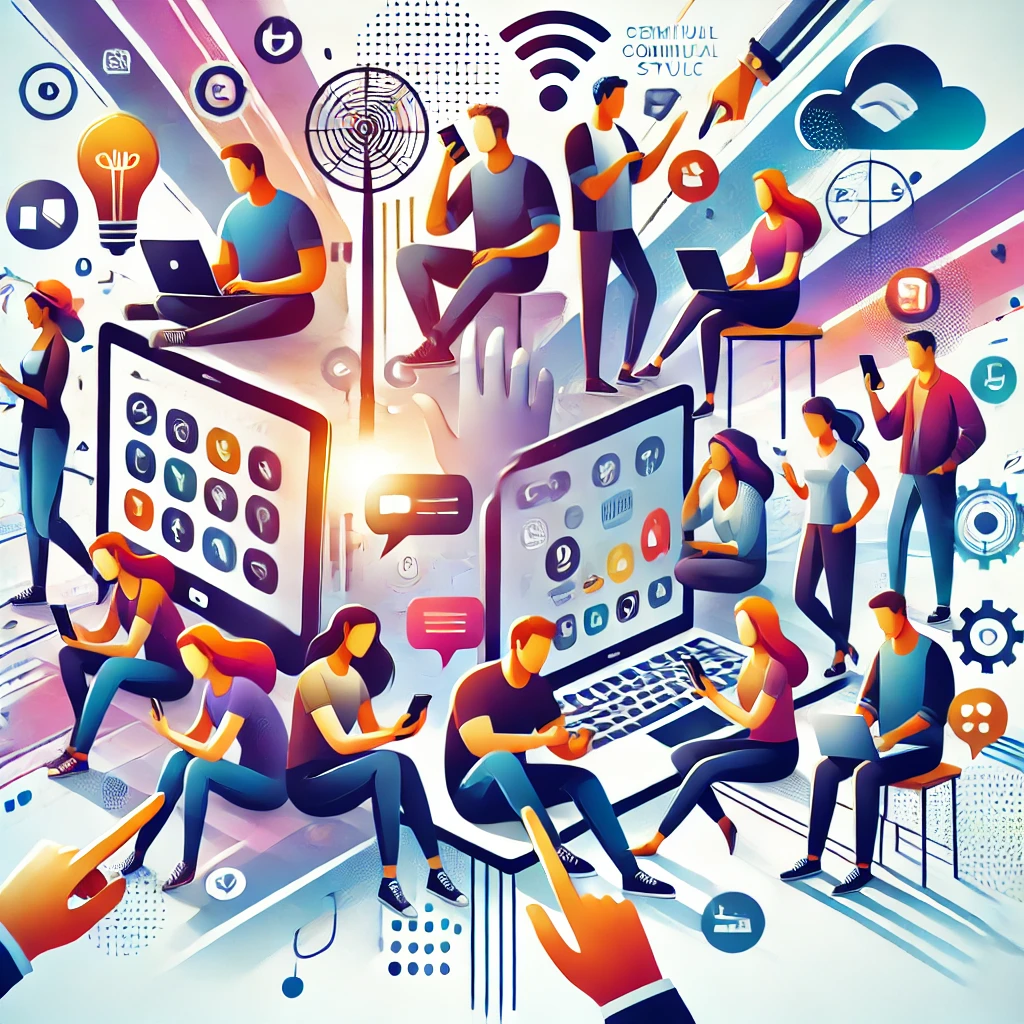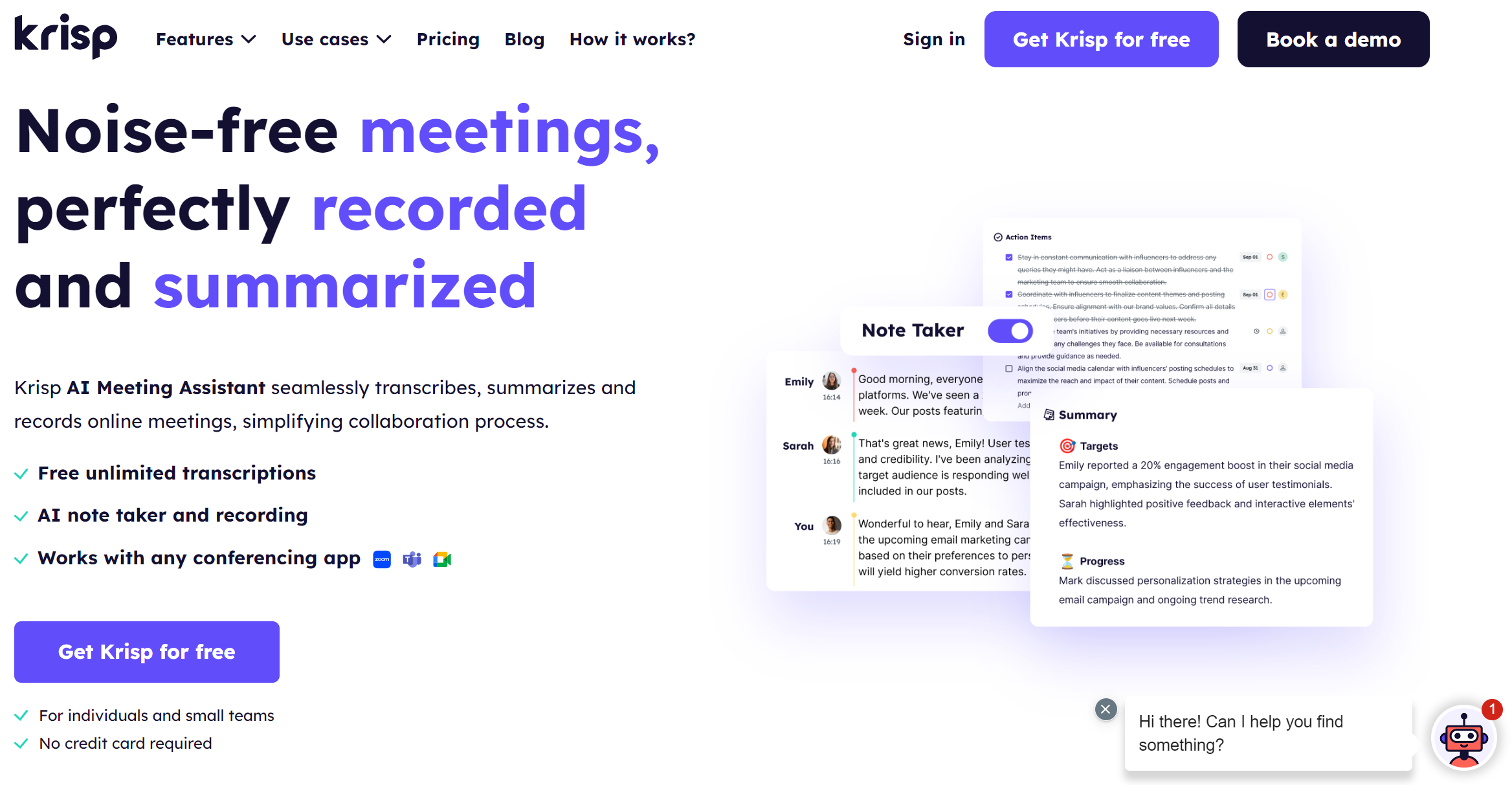Technology has transformed how we communicate, offering convenience and speed but also introducing challenges. How has technology affected communication? It connects us instantly but often reduces face-to-face interaction, showing how technology has affected communication negatively.
Let’s explore the impact of modern technology on communication to find the balance between digital ease and personal connection. Moreover, let’s see how the Krisp AI Meeting Assistant helps us connect and makes our online interactions productive.
How Technology Has Affected Communication

Are you wondering, “How has technology affected communication in the 20th and 21st centuries?” Modern technology has transformed communication, making it instant and accessible while altering how we connect.
For instance, smartphones allow us to message friends across the globe in seconds. Social media lets us share life moments with hundreds of people at once. However, this convenience comes at a cost.
Specifically, digital exchanges often replace face-to-face interactions, sometimes leading to misinterpretations and a sense of detachment. And as we rely on screens, the quality of our connections can diminish, highlighting the need for a balance between digital and in-person interactions.
That’s where tools like the Krisp AI Meeting Assistant step in to help us connect. For example, Krisp eliminates background distractions during online meetings and takes notes instead of you so you can better connect with others.
How Has the Internet Affected Communication
The internet has revolutionized communication by offering endless ways to connect, from emails to videoconferencing platforms like Zoom and Google Meets.
For instance, these platforms help companies hold meetings with employees worldwide, eliminating geographical barriers. While this connectivity fosters global collaboration, it also introduces challenges. These can include information overload and the spread of misinformation.
That’s why it’s vital to be mindful when communicating online to avoid misinformation and impulsive, poorly thought-out responses.
How Has Technology Affected Communication Negatively
While technology offers numerous communication benefits, it also has downsides. For instance, overusing social media can lead to superficial interactions where likes and comments replace real conversations.
Additionally, studies have shown that excessive screen time can decrease attention spans and harm our ability to engage in meaningful dialogue.
Moreover, miscommunication is common in digital spaces, where the lack of facial expressions and vocal tone can cause misunderstandings.
These negative impacts highlight the importance of moderating our tech usage and prioritizing real-world connections.
For example, Krisp’s AI Meeting Assistant provides crystal clear audio for online meetings to bridge both formal and informal communication gap among participants and eradicate miscommunication.
Moreover, Krisp enables meeting members to record their discussions and save them for future reference to boost accessibility.
How Has Technology Positively Affected Communication

Technology has also enhanced communication by making it faster, more efficient, and more accessible. Namely, video calls, instant messaging, and social media help people connect with loved ones, colleagues, and clients worldwide in real time.
For example, platforms like Zoom and WhatsApp enable us to maintain relationships and collaborate professionally regardless of location.
Technology also supports diverse communication methods, including text, voice, and visual media. As a result, technology caters to different preferences and needs, enhancing the overall quality and accessibility of interactions.
How Has Technology Affected Communication in the Workplace
In workplaces, technology has streamlined communication through tools like Slack, Microsoft Teams, and Google Workspace. For example, remote teams can collaborate on projects in real time, enhancing productivity and efficiency.
However, constant connectivity can also cause burnout, with employees feeling pressured to respond to messages after hours. Virtual communication lacks the immediacy of in-person cues, sometimes making it hard to convey urgency or tone.
Despite these drawbacks, technology remains critical for maintaining workflows, especially in hybrid and remote work environments. As a result, technology improves professional communication both in-house and remotely.
How Has Technology Affected Interpersonal Communication
Interpersonal communication has been significantly altered by technology, as seen with the rise of texting and video calls. Platforms like WhatsApp and Zoom allow people to stay in touch effortlessly, regardless of distance.
However, reliance on digital communication can sometimes hinder emotional connections. For instance, texting often lacks the depth of a face-to-face conversation, and non-verbal cues, like body language and facial expressions, are lost.
That’s why balancing digital and personal interactions is vital to maintaining strong interpersonal relationships.
How Has Technology Affected Communication in Relationships?
Technology plays a dual role in relationships: it can strengthen and challenge them. For example, couples often use messaging apps to stay connected throughout the day, sharing updates and photos instantly.
However, such connectivity can also result in misunderstandings and a lack of face-to-face communication. Precisely, a quick text may be misinterpreted without the context provided by tone and body language.
Additionally, overuse of social media can sometimes cause jealousy or comparison, impacting relationship dynamics. Thus, setting boundaries around tech use helps ensure technology enhances rather than hinders connection.
How Has Technology Affected Language and Communication?
Language and communication styles have evolved with technology, introducing new expressions, emojis, and abbreviations like “LOL” or “BRB.”
While these changes make conversations quicker and sometimes more expressive, they also risk oversimplifying language. For example, an emoji might replace a heartfelt message, losing nuance.
Additionally, autocorrect and predictive text often shape how we write, sometimes leading to less attention to spelling and grammar. This shift emphasizes balancing digital shorthand with clear, thoughtful communication when necessary.
How Has Krisp’s Meeting Assistant Technology Affected Communication?

The Krisp AI Meeting Assistant is a Noise Canceling and Note Taking app developed with productivity and efficiency in mind. Let’s see how Krisp’s Meeting Assistant answers the question, “How has technology affected our communication skills?”
Specifically, the Krisp AI Meeting Assistant is a leader in Productivity Voice AI and has revolutionized speech-to-text transformation. Krisp’s Meeting Assistant has all the necessary features to eliminate the negative impact of technology on communication and enhance asynchronous communication. How?
-
Krisp’s AI Meeting Assistant Eliminates Distractions and Miscommunication
Krisp’s Noise Cancellation feature enhances communication in virtual meetings by eliminating background noise and making conversations clearer and more professional.
Imagine attending a remote meeting where a barking dog or noisy coffee shop disrupts the flow. Thankfully, the Krisp AI Meeting Assistant filters out these distractions, ensuring smooth dialogue in a quiet environment, which is especially valuable for remote workers.
-
Krisp’s AI Meeting Assistant Enhances Social Skills
Krisp’s Meeting Assistant knows the best answer to the question, “How has technology affected the accuracy of written communication?” Specifically, the Krisp AI Meeting Assistant provides exceptionally accurate Note Taking with 96% accuracy.
So, you can use Krisp’s Meeting Transcription feature to transcribe your online discussions in real time instead of taking manual notes. As a result, you can better engage in communicating and brainstorming with others.
-
Krisp’s AI Meeting Assistant Boosts Engagement and Accessibility
Krisp’s Meeting Notes and Summaries feature transcribes your virtual discussions and summarizes your notes, highlighting the vital sections. You can save these summaries to revisit and review them later, thus increasing accessibility and engagement.
Moreover, you can save your meeting notes in simple meeting minutes templates for easier access and sharing. Such templates also keep your notes more organized.
-
Krisp’s AI Meeting Assistant Helps You Never Lose a Critical Discussion Point
Krisp’s Meeting Recording feature records your virtual interactions with the best-in-class audio. You can save these recordings for future reference and rewatch any part you wish. Thus, you can be sure never to forget a critical discussion point.
This is especially useful for teams as they can enhance brainstorming and decision-making by always having the necessary information.
Sum Up
The answer to “How has technology affected communication?” is negative and positive. Specifically, technology has brought convenience and complexity. However, it has also introduced challenges like reduced face-to-face interaction and the risk of miscommunication.
Thankfully, tools like the Krisp AI Meeting Assistant enhance our communication at work, personal relationships, or everyday interactions. Krisp’s Meeting Assistant balances digital convenience with meaningful engagement through Noise Cancellation, Meeting Recording, and Note Taking.
Frequently Asked Questions




